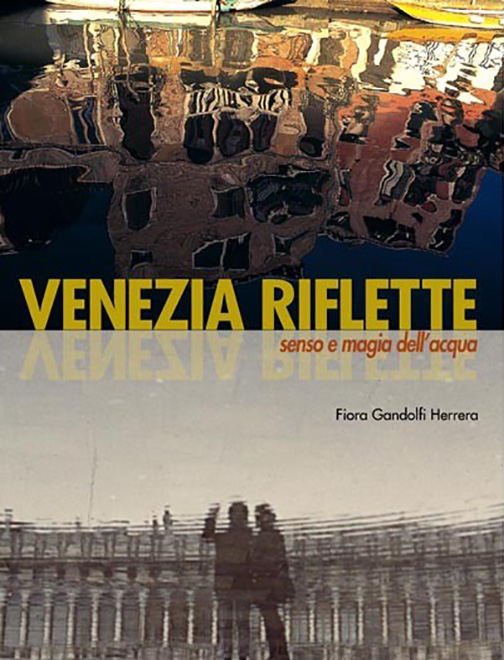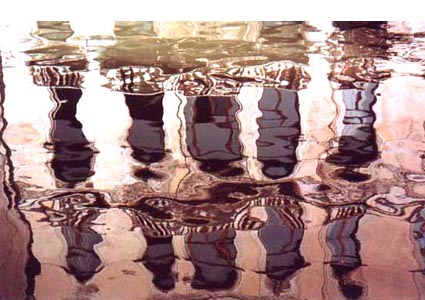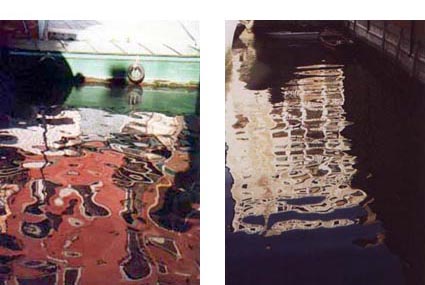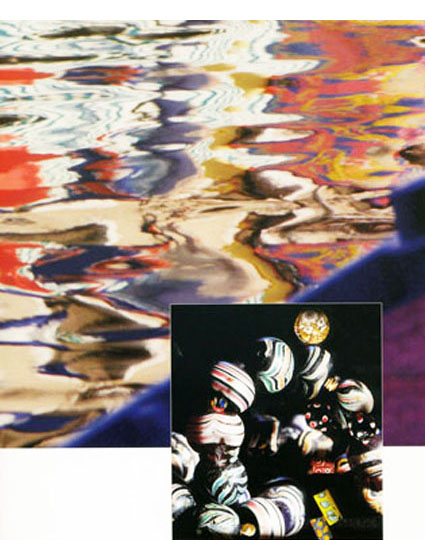Preface By Evgen Bavčar
I have always immagined that Venice carries within itself the old tale of Narcissus, who was intent on contemplating his image in the dead waters of a glorious past. Perhaps it was precisely here that the hero, deeply in love with himself, found the last refuge where he could drown in his own image. And, perhaps, it was the sound of the wind on the lagoon that stopped him from hearing the ungraspable call of the unlucky nymph Eco who remained outside of his gaze. Narcissus in fact cannot see anyone but himself, thus, he renounces love for another being choosing to die and lose himself in his own image.
And what if the reflections that appear in Fiora Gandolfi’s photographs are nothing but luminous shreds of the body of Narcisssus? The beauty of Venice finds temporary exile in these reflected images that represent for me both an unreal fragmented work that has been destroyed and an open wound festering in a body that has never been buried. Thus, when we contemplate the beauty of Venice we easily feel the pain of infinite mourning and we regretfully miss that image which is no longer truly itself. It somehow turns into the wounded gaze of those who feel the anxiety inherent in the search for a worthy place to bury Narcissus’s egotism.
In this game of ‘I and I’, which infinitely repeats itself, the reflections photographed by Fiora Gandolfi offer us an illusionary sense of quiet. In the end we hope to rediscover in the dried cadaver of this mythical dead man, a stone on which to engave one last epitaph:
‘For the death of the image’



